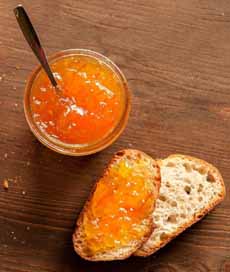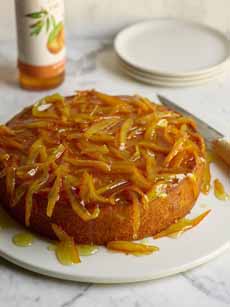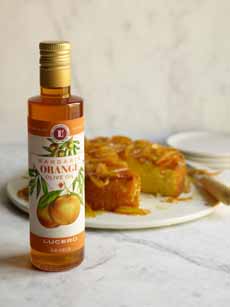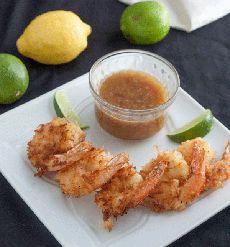TIP OF THE DAY: Uses For Marmalade & Recipe For Marmalade Olive Oil Cake
|
|
Marmalade is a soft citrus-based jelly that includes the flesh and often the peel of the fruit, suspended throughout the jelly base. The sweetness of the jelly is offset by the bitterness of the peel. Some products that are called marmalade—onion and tomato marmalades, for example—are actually misnamed jams and preserves. Here are the different types of jam, jelly and other sweet spreads. Marmalade can be made from kumquats, lemons, limes, grapefruits, mandarins, oranges (bergamot, Seville, sweet oranges) and other citrus fruits. It can be made from a single fruit or a combination. Here’s the history of marmalade, which dates back some 2,000 years. Beyond bread, toast and other breakfast breads, there are many other uses for marmalade. In most applications, warm the marmalade first. > National Marmalade Day is March 5th. Here’s a cake recipe from Lucero Olive Oil that brightens any winter day. It tides us over before spring begins to bring local fresh fruit. Oranges or lemons were crushed simultaneously with the olives to produce exceptionally flavored olive oils. Agrumi means citrus in Italian; to make a food “agrumato” is to make it citrusy. |
|
|
Today the crushing technique is used with other fruits, herbs such as basil and oregano, and some of the onion family (garlic, onions and shallots). Ingredients 1. PREHEAT the oven to 350°F. Apply 1 tablespoon extra virgin olive oil liberally to a 9” cake pan. 2. BEAT the eggs and sugar in mixer until foamy, approximately 2 minutes. Add the salt, buttermilk, and orange agrumato olive oil, continuing to beat until combined (about 1 additional minute at medium speed). 3. COMBINE the flour, baking powder and baking soda in a separate bowl combine. Using the lowest mixing speed, add the flour mixture to the wet mixture and process until the mixture is only just combined. Avoid over-mixing. 4. TRANSFER the batter into the prepared pan and bake until the center of the cake comes out clean using a toothpick or cake tester, about 30 minutes. 5. COOL the cake in the pan for about ten minutes, then turn onto a rack to completely cool. 6. DECORATE by spooning warm marmalade over the top of the cake right before serving, or by sifting powdered sugar over the top. CHECK OUT WHAT’S HAPPENING ON OUR HOME PAGE, THENIBBLE.COM. |
||






